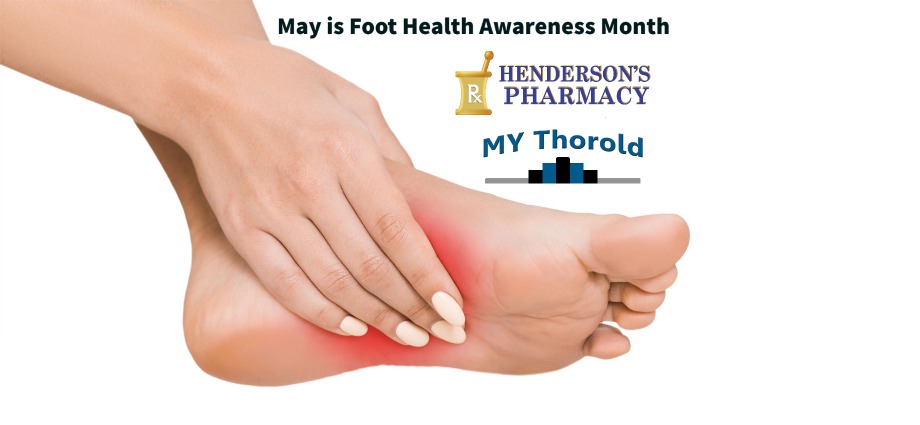May is Foot Health Awareness Month in Canada, so let’s talk about it here.
People in Thorold / Niagara can turn to one of many foot health professionals in the community to ask for advice. Your pharmacist at Henderson’s Pharmacy in Thorold has the knowledge and skills to advise you on proper foot care tips and techniques.
Henderson’s team can show that taking care of your feet is an important part of staying healthy. This is especially the case for people with diabetes. A good diabetes management plan should include regular foot inspections and proper care so you can identify any issues early.
Caring for your feet when you have diabetes
People with diabetes need to get to know their feet like – well, like the back of their hand. That’s because the high blood glucose levels common in diabetes can lead to two types of damage that spell trouble for the feet:
- blood vessel damage: Blood vessel damage can reduce blood flow to the feet, which can make the feet more vulnerable to ulcers and infection and make wounds slower to heal.
- nerve damage: The nerves that carry messages from the feet to the brain can be compromised by too much glucose in the blood. This nerve damage is called neuropathy. When that circuit is interrupted by nerve damage, your feet might have a burning, numbing, or tingling sensation, or you might not be able to sense pain. That sounds like a good thing until you realize that feeling pain is what signals you that problems are afoot.
So say you wear new shoes, and a callus develops underneath your foot. With nerve damage, you might never know that the callus is there at all. And a simple callus that goes undetected can grow into a deep sore, known as an ulcer. An ulcer that becomes infected is a serious condition. Add reduced blood circulation to the mix, and the healing process slows down. To compound the problem, glucose-rich blood provides plenty of food for germs, making infection even harder to fight off.
Left undetected or untreated, ulcers and other foot injuries can affect mobility, changing a person’s weight distribution on their feet and boosting their risk of blisters and calluses. Infections can even advance to the point of gangrene. In fact, people with diabetes are at an elevated risk of foot or leg amputation compared to people without diabetes. Amputation is needed to prevent gangrene from spreading to other parts of the body.
Learn more about taking the steps to better foot care on the Pharmasave website.

